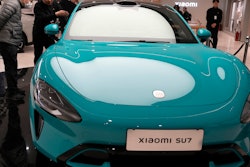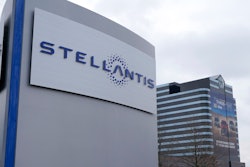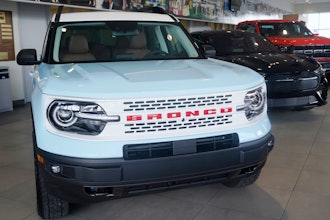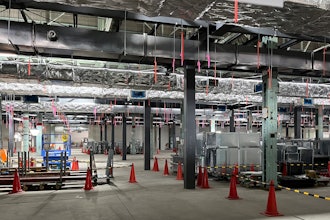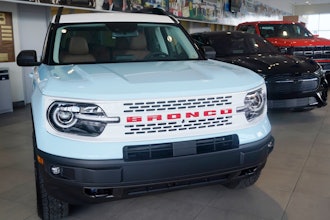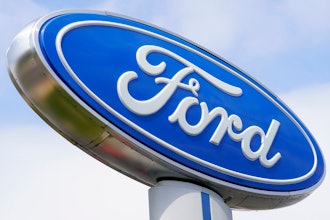Tolerance rings provide the most cost-effective way to meet EU anti-theft regulation.
Within recent years, automotive steering systems have evolved far beyond their primary function. They have now become a tool for car manufacturers to provide their customers with even more sophisticated features. In the 1990s, the need for anti-theft protection became more urgent. Thus, in 1995, EU regulatory bodies mandated that cars be fitted with security devices. Tolerance rings in steering systems allow car manufacturers in Brazil, Russia, India and China (BRIC) to offer anti-theft capabilities in order to meet EU regulations, while at the same time imparting additional benefits such as cost reduction.
Innovative Steering Columns
Traditionally, car steering columns were constructed using a solid shaft. This was a simple, limited way of connecting the steering system to the vehicle, with little scope for incorporating additional features. If manufacturers were to tap the full potential of the steering column, an alternative would have to be found. Hence, in the early 1990s, we saw the emergence of hollow shaft steering columns in high-end vehicles. This lightweighting brought with it material and energy savings in the car production stage, less noise than solid shaft equivalents, reductions in CO2 emissions due to lighter car loads, and, most importantly, facilitated the easy incorporation of additional features.
In most new cars, the steering system and adjoining steering column are developed to house mechanical features that improve functionality, safety, carbon footprint and aesthetics. It has got to the stage where the system is, practically speaking, the main interface between drivers and the technological performance of their automobiles, used to change a radio station or control car speed, for example.
Anti-Theft - Europe Leads The Way For BRIC
In Europe, the potential of the hollow (or tubular) steering system has long been recognized. For OEMs and car manufacturers offering high-end features in the steering systems, it has become a main area of focus for technology enhancements.
Unlike their European counterparts, BRIC car manufacturers have been slower to make changes to traditional manufacturing methods and transition to tubular shafts. Now, more and more regional producers are contemplating the incorporation of hollow shafts to compete with European car manufacturers and provide the same high-level features.
As they transition to tubular steering systems, BRIC manufacturers must consider compliance with EU anti-theft regulations to be able to export to Europe. Since November 1995, the EU commission has been prompting car manufacturers to provide features for vehicles to ensure they are operated safely and, at the same time, ensure that an essential level of security is provided (Directive 95/56/EC). This regulation dictates that steering locks must be able to withstand forces of 100Nm applied via the steering wheel without failing. Thus, it became law that cars exported to European markets be fitted with security devices. Additionally, the recently launched Chinese directive GB15740- 2006 strengthens the need for an anti-theft mechanism.
The current most popular anti-theft method in the BRIC region uses a manual process whereby the shaft is welded to the steering column. While this alternative allows manufacturers to meet international regulations, it is labor-intensive, unable to be used in mass production, and only applicable for solid shaft steering systems. Additionally, theft attempts can completely damage the steering system, leaving car owners with expensive repair bills and an unsatisfactory perception of the manufacturers’ brand.
Many European manufacturers have already found a solution in tolerance rings, which can be used within hollow steering designs to comply with the EU and Chinese anti-theft regulations whilst also providing cost reductions in manufacturing. Car manufacturers leveraging the benefits of this technology include Audi, BMW, Citröen, Seat and Volkswagen, who all use tolerance rings in their rack and column mounted electric power steering systems.
Competitive Benefits - Taking The Strain
Tolerance rings are high-quality steel, radially sprung fasteners that allow for optimal joining between two annular (ring-shaped) components. These rings are small in scale, but enormous in impact.
First, tolerance rings withstand the force requirements prescribed by the EU directive, proving their ability to perform as an anti-theft mechanism. Additionally, from a production standpoint, tolerance rings are easy to apply, unlike the time-consuming and manual welding mechanism. In the standard three-component system, the tolerance ring is simply placed on the steering shaft and the lock column is pressed over the ring to provide interference pressure. This allows the ring to protect the steering column assembly from potential damage as a result of attempted theft. Unlike manual welding techniques, tolerance rings allow for standardization by providing consistency from part to part.
The key to the tolerance ring's effectiveness, and also its adaptability, is to be found in the radial protrusions that run around its circumference. The way that these 'waves' transfer force between the joining components means that direct torque transfer and torque slip can be effectively handled.
Other important factors of a tolerance ring are its shape, size, number of radial protrusions and its thickness and hardness, which can be combined to provide the ideal interference fit. The ideal parameters depend on the components used in the car’s steering shaft, and manufacturers should seek a solution customized for their operations. When joining a steering shaft and column comprised of soft steel components, using a very heavy tolerance ring with numerous stiff waves and a thick material can cause damage during torque slip. Ideally, the ring’s hardness should match the hardness of the other components in the system.
For example, Saint-Gobain, a leader in bearing and tolerance ring technology, customizes its RENCOL tolerance rings to meet the exact needs of the automobile manufacturer or engineer. By changing one or several parameters, the company’s automotive design experts can adapt the tolerance ring to fit any manufacturer’s system.
Additionally, Saint-Gobain uses its design and testing facilities to ensure complete customer satisfaction and share its application knowledge with manufacturers.
By adopting a combination of hollow steering shafts and tolerance rings, BRIC car manufacturers can provide a superior anti-theft solution to satisfy consumers and regulatory bodies alike with high-end features and anti-theft functionality. These benefits, coupled with production efficiencies and standardization, illustrate the enormous potential of tolerance rings in the automotive industry.
Chris joined Saint-Gobain Performance Plastics in 2008 as Product Manager in the Automotive sector, after having worked for Rencol Tolerance Rings Ltd since 2000 as Technical Project Manager and Product Manager in Automotive. Chris began his career in 1987 working as an Automotive Product Technologist for British Steel. He has a degree in Materials Engineering and is an expert in process benchmarking, project management, application development, costing, materials and material forming processes. In his current position as Global Market Manager Automotive Chassis and Powertrain, Chris’ role includes business planning, developing global strategies, developing new applications, marketing materials and training materials.
For more information visit www.bearings.saint-gobain.com.






